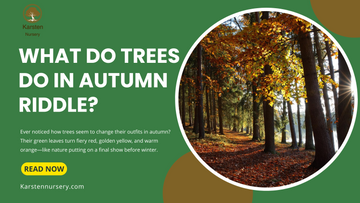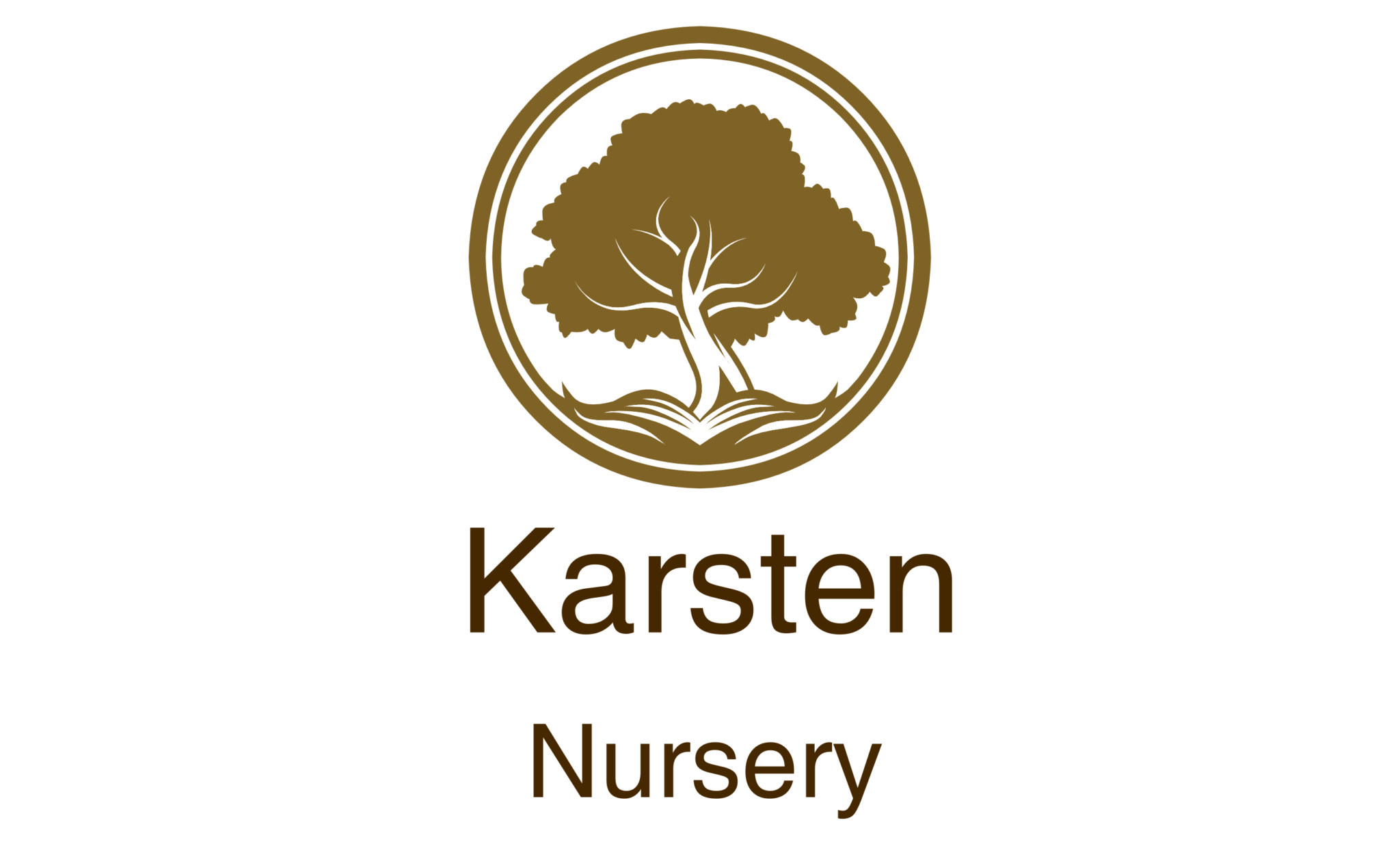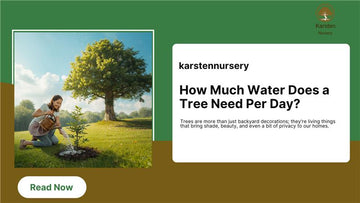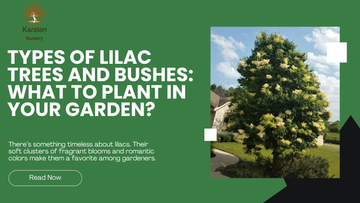Where Do Birch Trees Grow? Climate, Regions & Ideal Conditions Explained
by Joel Karsten on Aug 04, 2025

Birch trees are some of nature's most elegant creations, instantly recognizable by their striking white bark that peels like paper and delicate leaves that flutter in the breeze. If you've ever wandered through a forest and admired these beauties, you might have wondered, Where do birch trees grow, and what makes them thrive?
Whether you're a gardener looking to plant one or simply a nature enthusiast, understanding their preferred climate, regions, and growing conditions will help you appreciate these trees even more.
Birch Tree Climate Requirements
Birch trees are true northerners at heart. They flourish in temperate forests across the northern hemisphere, where winters are cold and summers are mild. Unlike tropical trees that want constant warmth, prefer cooler climates, and can survive near the tree line in mountainous regions where few other trees grow.
What Conditions Do Birch Trees Love?
-
Moist, well-drained soil – They hate dry, compacted earth or waterlogged roots.
-
Full sun to partial shade – At least 4-6 hours of sunlight keeps them happy.
-
Cool to moderate temperatures – Extreme heat stresses them out.
-
Moderate humidity – Dry air can make them prone to pests.
Most birch tree varieties grow best in USDA hardiness zones 2-7, which covers much of the northern U.S., Canada, and parts of Europe and Asia. If you live in a hot southern state, you might struggle to keep a birch healthy, unless you pick a tougher variety like the River Birch, which can handle heat better.
Looking for a healthy birch tree that suits your climate? Check out the selection at Karsten Nursery; they specialize in hardy, thriving trees perfect for your landscape.
Regions Where Birch Trees Thrive: A Global Perspective

Birches are world travelers, growing naturally across three continents. Here’s where you’ll find them:
North America
-
Paper Birch (Betula papyrifera) – The classic white-barked beauty of New England and Canada.
-
River Birch (Betula nigra) – Thrives in wet areas across the eastern U.S.
-
Yellow Birch (Betula alleghaniensis) – Common in the Appalachian Mountains.
Europe
-
European White Birch (Betula pendula) – A graceful tree found from Scandinavia to the Mediterranean.
-
Silver Birch – A close relative, often seen in British and Irish woodlands.
Asia
-
Himalayan Birch (Betula utilis) – Grows at high elevations with stunning peeling bark.
-
Japanese White Birch (Betula platyphylla) – A delicate, ornamental favorite.
In the U.S., birches are most abundant in:
-
The Northeast (Maine, Vermont, New Hampshire).
-
The Great Lakes region (Michigan, Wisconsin, Minnesota).
-
The Pacific Northwest (Washington, Oregon).
Want to know which birch tree types grow best near you? Visit Karsten Nursery for expert recommendations.
Ideal Growing Conditions for Birch Trees
Planting a birch tree isn’t hard—if you give it what it loves. Here’s how to set yours up for success:
Read More Blogs: How long does it take for a tree to grow?
1. Soil: The Foundation of Healthy Growth
-
Well-drained, slightly acidic soil (pH 5.0-6.5) is ideal.
-
Avoid heavy clay, as it suffocates roots.
-
River Birch can tolerate wetter soils, making it great for rain gardens.
2. Sunlight & Temperature: Finding the Sweet Spot
-
Proper sunlight is best, but they can tolerate light shade.
-
Too much shade often leads to weak growth and fewer leaves.
-
Extreme summer heat can scorch leaves, so mulch helps keep roots cool.
3. Watering: Keeping Them Hydrated
-
Young birches need regular watering; think of them like thirsty plants.
-
Drought is their worst enemy; stressed trees attract pests like the bronze birch borer.
-
A deep soak once a week beats frequent shallow watering.
4. Pests & Diseases: Prevention Is Key
-
Bronze birch borers attack weak trees; keep them healthy with proper care.
-
Leaf miners can make leaves look ugly, but rarely kill the tree.
-
Choosing disease-resistant varieties (like River Birch) reduces headaches.
Need tips on growing birch trees without the hassle? Karsten Nursery has guides and healthy trees to get you started.
Birch Tree Growing Zones: Picking the Right Variety

Not all birches are the same; some can handle cold better, while others may tolerate heat. Here’s a quick guide:
|
Birch Type |
Best Growing Zones |
Special Notes |
|
Paper Birch |
Zones 2-6 |
Classic white bark, loves cold winters |
|
River Birch |
Zones 4-9 |
Handles heat and wet soil well |
|
European White Birch |
Zones 2-7 |
Elegant weeping branches |
|
Yellow Birch |
Zones 3-7 |
Golden bark, great for woodworking |
If you’re in a warmer zone (7+), River Birch is best for you; it won’t dry in summer.
Find the perfect birch tree varieties for your backyard at Karsten Nursery.
Final Thoughts: Bringing Birch Beauty to Your Yard
Whether you’re planting a solitary birch as a focal point or creating a mini forest grove, these trees add elegance to any landscape. Just remember:
Pick the right variety for your climate.
Keep the soil moist but not soggy.
Watch for pests, especially in hot summers.
Ready to plant? Explore top-quality birch trees for sale at Karsten Nursery—your perfect birch is waiting!
FAQs
1. Where do birch trees grow in the USA?
Mostly in the northern states (Maine, Minnesota, Michigan) and the Pacific Northwest. Some, like River Birch, grow as far south as Florida.
2. Are aspen and birch the same?
No! They look similar, but aspens have smoother bark and belong to the Populus family (like cottonwoods).
3. Why are birch trees special?
Their peeling white bark is unique, and they grow fast, making them great for landscaping. Native cultures used birch bark for canoes and writing paper.
4. How long do birch trees live?
Generally 40-70 years, though some in perfect conditions reach 100+.
5. What does a birch tree look like?
White, papery bark (with some species having darker bark), triangular leaves that turn golden yellow in fall, and a slender, airy shape that sways beautifully in the wind.
Also Read More Blogs





